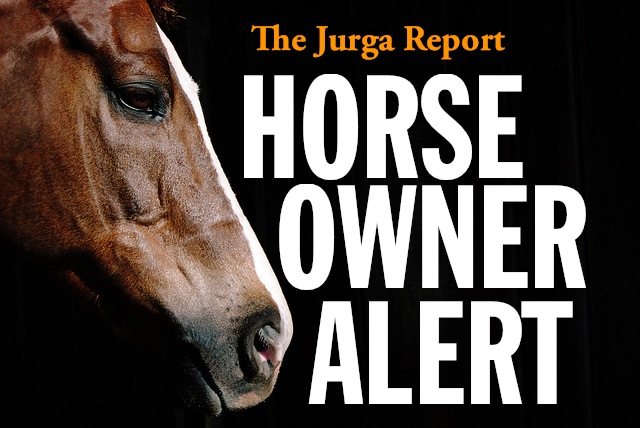
We may only be 15 days into February, but the count of states reporting cases of the neurological form of equine herpes virus (EHV-1), also known as equine herpesvirus myeloencephalopathy (EHM) is up to three.
Texas and Virginia were joined by Minnesota and Oklahoma last week. On Friday, Virginia announced the discovery of a second confirmed case and the quarantine of its stable.
Oklahoma State University Veterinary Medical Hospital issued a statement saying that a hospitalized patient there has been confirmed with the neuropathogenic form of equine herpesvirus (EHV-1). The university gave assuurances that biosecurity programs and disinfection protocols had been implemented there.
The Minnesota Board of Animal Health shared this more detailed and updated announcement on Friday:
“A horse with EHM has been identified in Scott County. We have put our EHM control plan into action.
“The horse was stabled at Dark Horse Farm, 4300 182nd Street East, Prior Lake, MN 55312. The horse became ill on Friday, February 6. It exhibited neurological signs including ataxia and urinary incontinence. It was then moved to Cleary Lake Veterinary Clinic in Prior Lake where it was held in isolation for treatment until test results were completed.
“Infection with equine herpesvirus type 1 (EHV-1) was subsequently confirmed by polymerase chain reaction (PCR) tests performed at Cornell University. The horse was euthanized on Thursday, February 12.
“The Board has placed a quarantine on the other horses at the stable. These horses will not be allowed to leave the stable for at least 21 days and will be monitored closely for fever or symptom of illness consistent with EHV-1.”
This case in Minnesota is handled under state’s new “EHM Control Plan”, which uses set definitions of terms for use in describing and reporting on EHM in that state. It also calls for public reporting of the cases and the state’s intention to reveal the specific location where a quarantine is in place.
To learn more:
Download the Minnesota EHM Control Plan document
The University of Minnesota recommends these links for Minnesota horse owners to stay up to date on information about EHV-1, EHM and any outbreaks in Minnesota:
For more information on EVH-1, view the recorded My Horse University EHV-1 webinar “Lessons Learned from Recent EHV-1 Outbreaks” (University of California at Davis
For up-to-date information on confirmed cases of EHV-1 in Minnesota, visit https://www.bah.state.mn.us/horses.
For information on biosecurity, visit http://www.aphis.usda.gov/publications/animal_health/2011/bro_keep_horses_healthy.pdf
Check the University of Minnesota Equine Extension Program Facebook page: https://www.facebook.com/UMNHorse.
A horse with EHM has been identified in Scott County. We have put our EHM control plan into action.
The horse was stabled at Dark Horse Farm, 4300 182nd Street East, Prior Lake, MN 55312. The horse became ill on Friday, February 6. It exhibited neurological signs including ataxia and urinary incontinence. It was then moved to Cleary Lake Veterinary Clinic in Prior Lake where it was held in isolation for treatment until test results were completed. Infection with equine herpesvirus type 1 (EHV-1) was subsequently confirmed by polymerase chain reaction (PCR) tests performed at Cornell University. The horse was euthanized on Thursday, February 12.
The Board has placed a quarantine on the other horses at the stable. These horses will not be allowed to leave the stable for at least 21 days and will be monitored closely for fever or symptom of illness consistent with EHV-1.
A horse with EHM has been identified in Scott County. We have put our EHM control plan into action.
The horse was stabled at Dark Horse Farm, 4300 182nd Street East, Prior Lake, MN 55312. The horse became ill on Friday, February 6. It exhibited neurological signs including ataxia and urinary incontinence. It was then moved to Cleary Lake Veterinary Clinic in Prior Lake where it was held in isolation for treatment until test results were completed. Infection with equine herpesvirus type 1 (EHV-1) was subsequently confirmed by polymerase chain reaction (PCR) tests performed at Cornell University. The horse was euthanized on Thursday, February 12.
The Board has placed a quarantine on the other horses at the stable. These horses will not be allowed to leave the stable for at least 21 days and will be monitored closely for fever or symptom of illness consistent with EHV-1.
Foal’s head image by L. Schonk.








